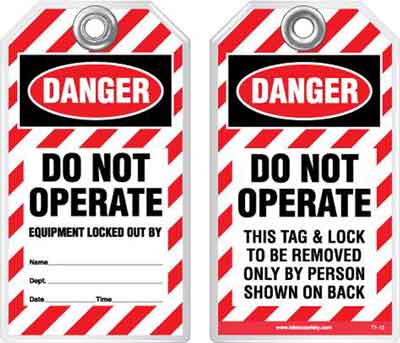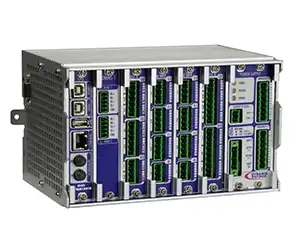Latest Fleet Management Articles

Fleet Management Spotlight
Fleet Management Spotlight explores telematics, route optimization, IoT sensors, predictive maintenance, power electronics, EV charging infrastructure, and energy management to optimize uptime, safety, and efficiency in electrically driven fleet operations.
What Is Fleet Management Spotlight?
An engineering brief on data-driven fleet control, telematics, power systems for efficient electrified operations.
✅ Telematics, CAN bus, and IoT sensors for real-time diagnostics
✅ Power electronics for EV charging, load balancing, and grid interaction
✅ Predictive maintenance via vibration, thermal, and battery analytics
6 Tips To Gear Up For WinterWinter is coming and it's time to prepare your fleet for the first blast of icy weather. There are a lot of things fleet managers can do to keep their drivers safe and their vehicles running all season long. In addition to traditional preparation, there is a growing number of high-tech solutions on the market that can help ensure a safe and prosperous winter. Here are six tips for winter readiness.
- Vehicle maintenance. Make sure your vehicles are equipped with fresh winter tires and that they're properly inflated. Make sure that your fluids are topped up and that the vehicle's heating and window defrost systems are working properly. Consider switching to winterized fuel once the temperature drops. As part of a proactive service plan, reviewing a concise overview of preventive maintenance principles can help you schedule inspections before the first freeze.
- Emergency kits. Do your vehicles contain blankets, water, road flares, fire extinguishers and jumper cables? These essential items can help keep your drivers safe and as comfortable as possible if they're sidelined by inclement weather. In addition to supplies, reminding drivers of fundamental electrical safety tips helps them handle batteries, jump-starts, and portable heaters more confidently.
- Mobile communications. Make sure your drivers are equipped with current Smartphones and reliable cellular connectivity. It's absolutely vital that you can reach your drivers at all times, especially during really bad weather. What's more, today's top Smartphones will allow your drivers to use safety apps. Pairing smartphones with a modern fleet telematics system gives dispatch real-time visibility and two-way alerts during storms.
- Mobile apps. There are a number of mobile apps available that provide convenience and safety benefits. For example, Copilot Truck provides voice-guided GPS that directs drivers along the best trucking routes. It considers vehicle size and weight along with load type when selecting routes. This can be really handy if the weather is bad and drivers need to make unscheduled route changes. Route-planning tools that ingest roadway data and smart level-crossing information can also reduce delays and risks near rail lines in heavy snow.
- Remote sensor technology. Companies like Seattle-based Zonar are changing the industry by equipping entire vehicles with remote sensors that can provide drivers and managers with both GPS tracking and data on driving performance, maintenance reports, and more. Remote sensors can provide real-time alerts when vehicles are experiencing mechanical difficulties?alerts which can be critical when driving conditions are poor. To turn sensor data into action, brief supervisors with targeted preventive maintenance training so they can interpret alerts and prioritize repairs effectively.
- Driver scorecards. Remote sensors also enable companies like Actsoft to record driving performance data, such as speed and braking habits, and formulate it into driver scorecards, which can be evaluated by fleet managers and drivers alike. They can help determine whether drivers have habits that are unsafe in winter conditions, such as sudden braking. Drivers can then make improvements that will help keep them safe. Many high-hazard industries, including utility field work guided by linemen safety best practices use similar scorecards to reinforce safe habits in adverse conditions.
There's a lot to think about when it comes to winter prep, but these solutions will go a long way in ensuring you have a safe and profitable season. Modern conveniences like GPS tracking let you know where your drivers are, so you can find them if they're in trouble. It also lets you plan routes more efficiently. More and more, fleet managers are fully equipping their vehicles with sensors for the ultimate in performance management and safety. If you haven't adopted these high-tech solutions yet, maybe it's time for an overhaul. Coordinating with local utilities on scheduled electrical substation maintenance can also inform fueling, charging, and depot operations during extreme cold.
Related Articles
Sign Up for Electricity Forum’s Fleet Management Newsletter
Stay informed with our FREE Fleet Management Newsletter — get the latest news, breakthrough technologies, and expert insights, delivered straight to your inbox.

Telematics Systems Streamline Utilities Fleet Management
Telematics system integrates GNSS/GPS, IoT sensors, CAN bus, and 4G/5G modems for real-time vehicle telemetry, diagnostics, and fleet management, leveraging embedded TCUs, edge analytics, and secure cloud connectivity for electrical systems monitoring.
What Is a Telematics System?
An embedded platform combining GNSS, sensors, and modems to acquire, process, and transmit vehicle electrical data.
✅ Interfaces: CAN, LIN, OBD-II, RS-485 for ECU diagnostics
✅ GNSS, IMU, sensor fusion for precise tracking and telemetry
✅ Secure 4G/5G, Wi-Fi, MQTT/HTTP to cloud; OTA and encryption
Telematics refers to the transfer of data/information via telecommunications which is now a common term used by the utilities sector generally referred to as Vehicle Telematics and plays a major role in utilities fleet management system. It is typically an in-house utilities function, integrating vehicle technology, road safety, road transportation data/telecommunications with information and telecommunication technology. It is the technology of sending and receiving and storing information related fleet vehicles via telecommunication devices. Telematics refers specifically to GPS vehicle tracking. In many utilities contexts, telematics data aligns with smart grid principles to enhance situational awareness across fleets.
The main goal of a fleet management telematics system is to streamline and simplify the process of tracking and maintaining utilities fleet. Fleet managers can track the location of their equipment, monitor its progress and ultimately determine any action to be taken. For example fleet managers focused on fuel consumption can easily monitor, evaluate and make real time maintenance, process behaviour or route decisions. By pairing location and engine diagnostics with advanced data analytics, managers can forecast issues and optimize routes more confidently.
For a sector-wide perspective on tools, case studies, and adoption trends, explore the fleet management spotlight to benchmark practices against industry leaders.
The association of Equipment Management Professional (AEMP) drafted a Telematics Data Standard: At the time of this writing, the AEM/AEMP Draft Telematics API (Application Programming Interface) Standard, Version 2.0, is now available. http://www.aemp.org/aemaemp-telematics-standard/
A standards-based approach is strengthened by understanding transmission methods in industrial networks that underpin reliable telematics data exchange.
Telematics can involve any of the following:
- The technology of sending, receiving and storing data/information via telecommunication devices and in parallel affecting various controls on remote objects.
- The integrated use of telecommunications and data for control of vehicles on the move.
- Global Navigation Satellite System technology integrated with computers and mobile communications technology in automotive navigation systems.
When integrated with facility operations, telematics insights can interoperate with energy management systems to coordinate demand and load profiles effectively.
Benefits of Fleet Management Telematics:
- Increased productivity
- Controlled fuel cost
- Improved customer service
- Increased fleet safety & security
- Reduced operating expenses
- Reduced unauthorized vehicle use
These outcomes also support broader utility goals in strategic energy management by turning fleet data into actionable efficiency programs.
By sharing verified usage and schedule data with building energy management systems, organizations can align vehicle operations with facility energy plans and peak avoidance strategies.








